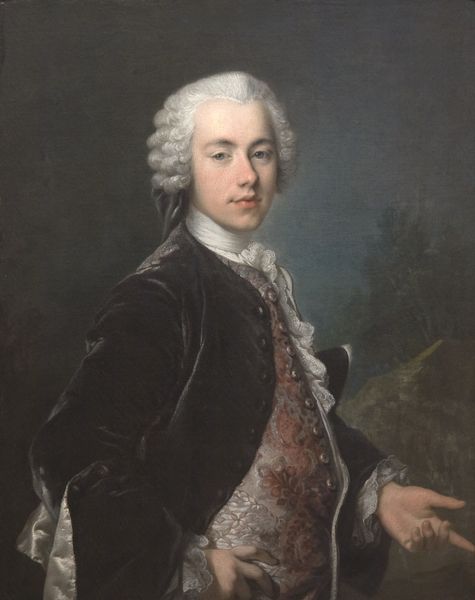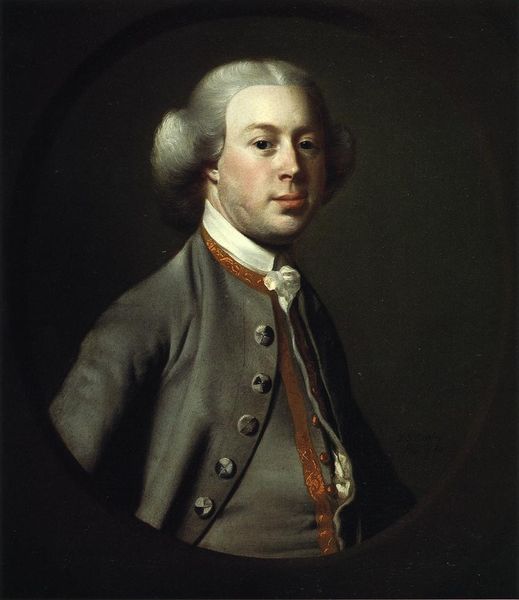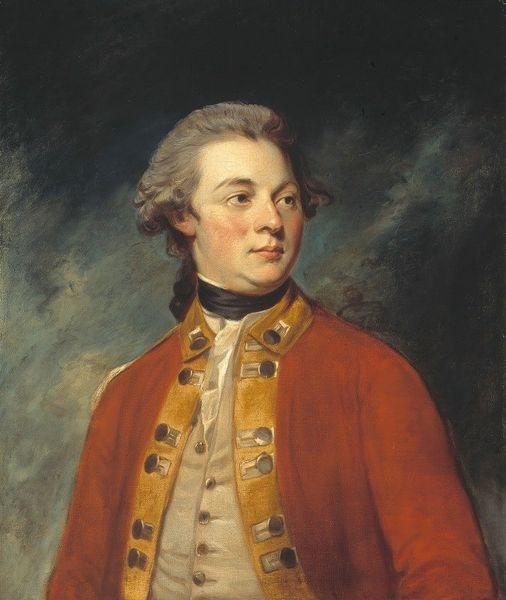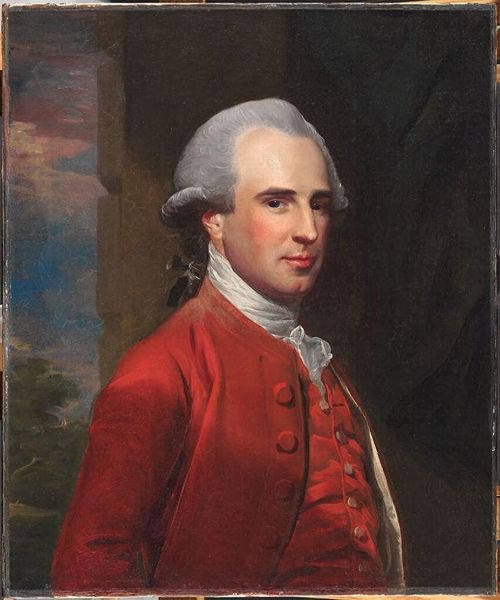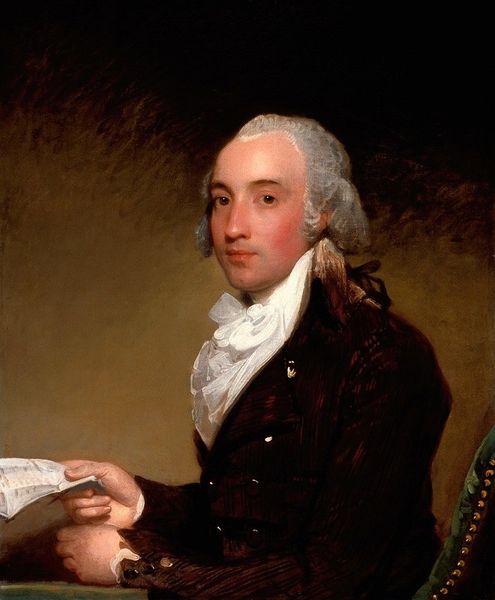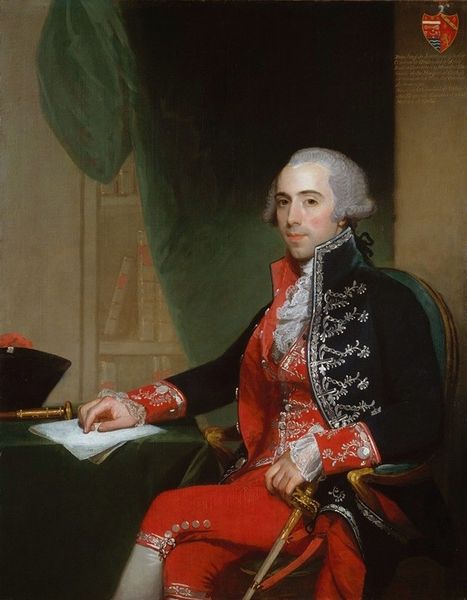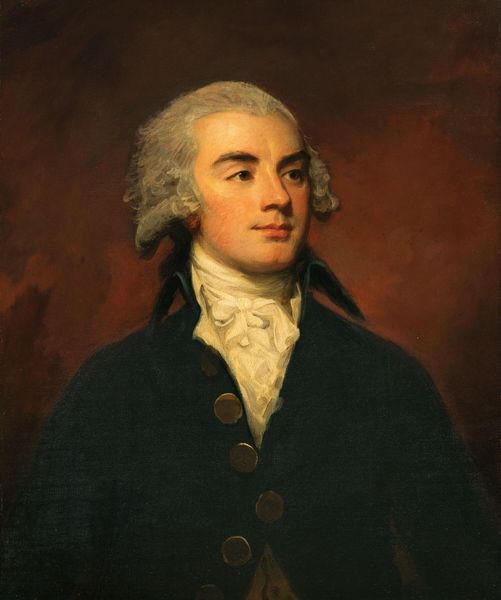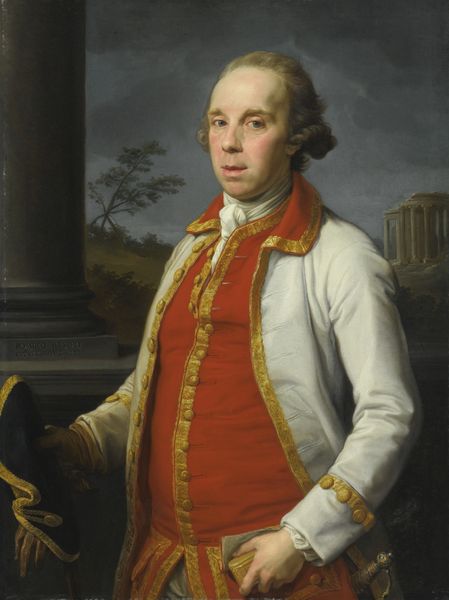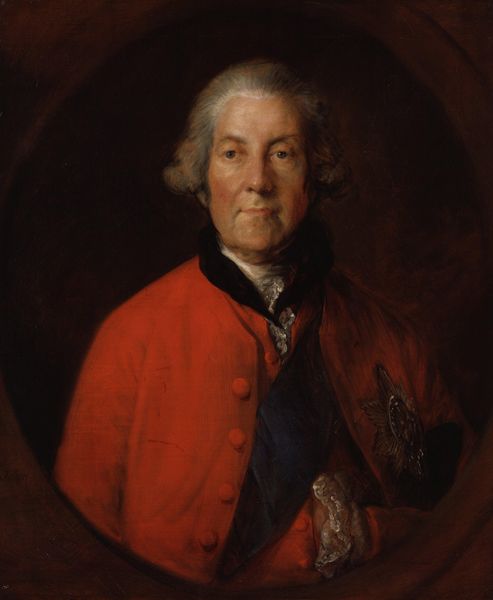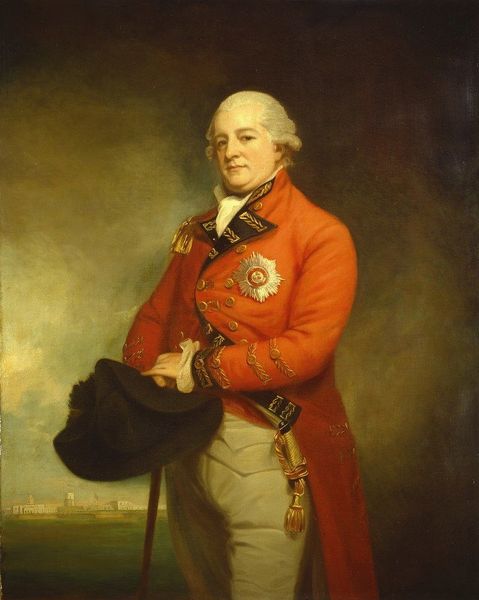
Copyright: Public domain
Editor: So, this is Pompeo Batoni's "Philip Metcalfe," painted in 1787, oil on canvas. I'm struck by the contrast between Metcalfe's rather understated expression and the opulent red coat. What do you see in this piece beyond a standard portrait? Curator: Beyond the surface, this painting acts as a potent signifier of power and privilege in the late 18th century. Consider the Grand Tour context – young, wealthy men like Metcalfe traveling to experience European culture, especially in Italy. It was almost a performative ritual of elite masculinity. Editor: A performance? In what way? Curator: Think about it: Batoni was the go-to portraitist for these men. The inclusion of Roman ruins in the background—symbolic of classical ideals—reinforces a narrative of inherited authority and cultivated taste. How do we reconcile this celebration of the elite with growing unrest that would later lead to revolutions across Europe? Editor: That’s a great question! Is Batoni critiquing this class, or simply participating in its glorification? Curator: It’s complex. As an artist, he’s profiting from this system, but we can still read a certain tension in the image. Note the somewhat detached gaze of Metcalfe. Is it confidence, or a hint of the unease brewing beneath the surface of aristocratic society? It’s in those subtle details we see the cracks beginning to form. Editor: I never would have considered that! Thinking about the political unrest makes me view the painting in a new light; it’s more than just a portrait of a privileged man. Curator: Exactly. It's a record of a specific cultural moment, laden with the complexities and contradictions of its time. Always ask, "Whose story is being told, and whose is being omitted?" That's where the real insights lie.
Comments
No comments
Be the first to comment and join the conversation on the ultimate creative platform.
